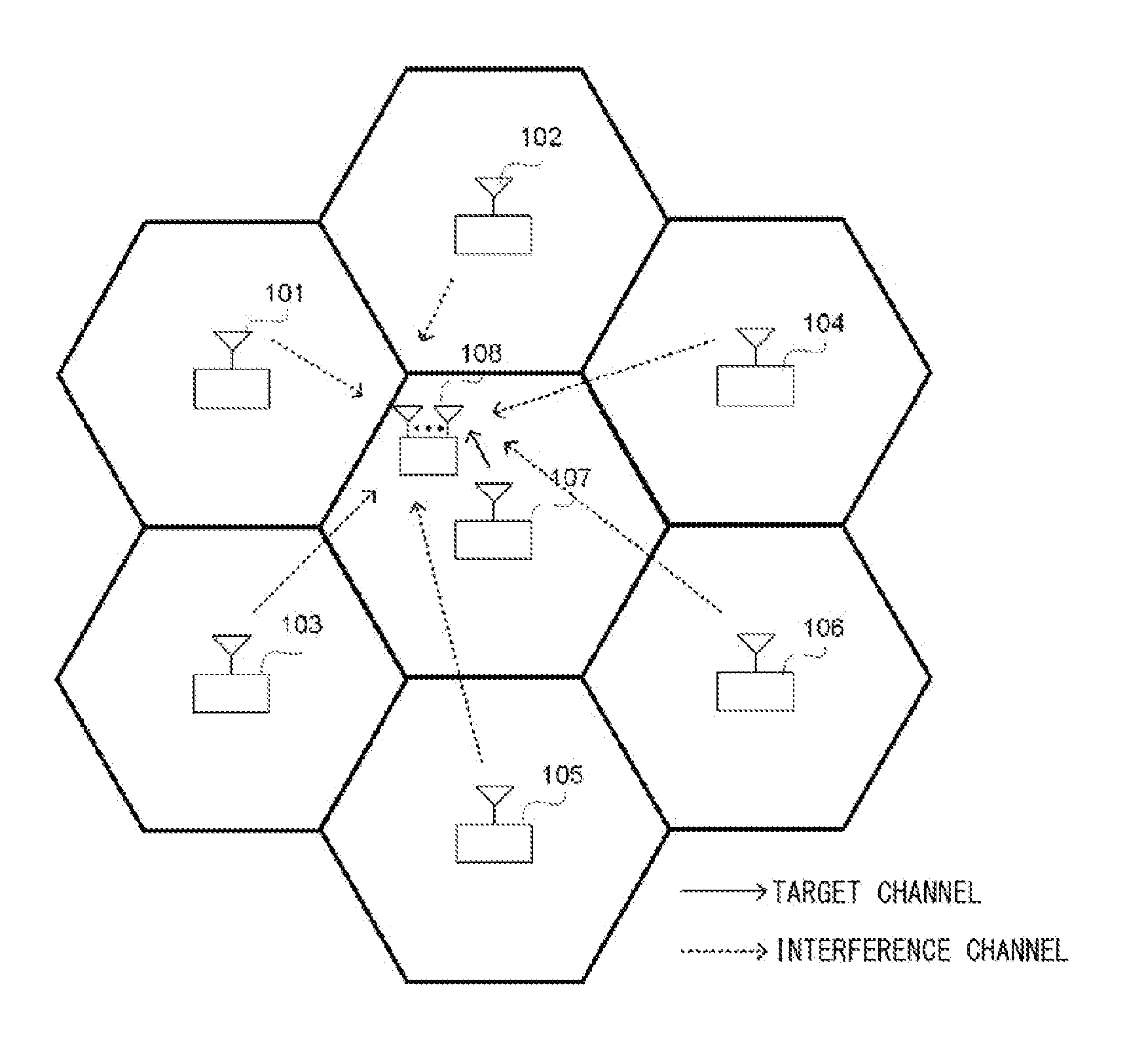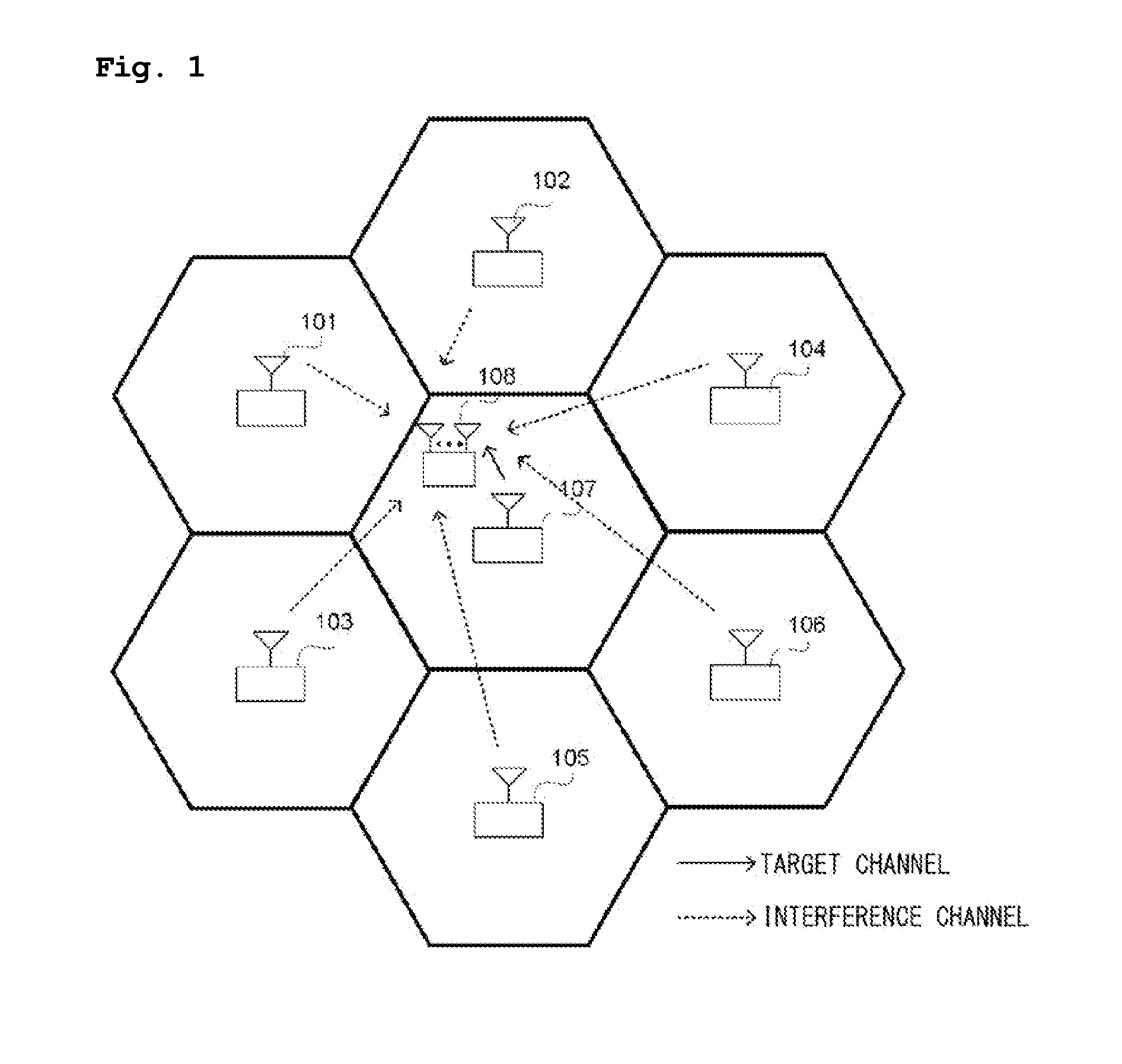Apparatus for removing interference between neighbor cells in a radio communication system, and method for same
- Summary
- Abstract
- Description
- Claims
- Application Information
AI Technical Summary
Benefits of technology
Problems solved by technology
Method used
Image
Examples
Example
DESCRIPTION OF REFERENCE NUMERALS OF PRINCIPAL ELEMENTS IN THE DRAWINGS
[0029]910: receiving unit[0030]920: first determination unit[0031]930: second determination unit[0032]940: third determination unit[0033]950: estimation unit
BEST MODE
[0034]Hereinafter, an apparatus and method for cancelling interference between neighboring cells in a wireless communication system according to embodiments of the present invention will be described in detail with reference to FIGS. 1 to 9.
[0035]The present invention proposes a scheme for cancelling interference between neighboring cells. That is, the present invention can estimate a target signal or an interference signal by applying only target and interference signal vectors, which have been selected using a Minimum Mean Square Error-Ordered Successive Interference Cancellation (MMSE-OSIC) technique, to a Maximum Likelihood (ML) technique. In this case, the number of target and interference signal vectors can be determined in consideration of the...
PUM
 Login to View More
Login to View More Abstract
Description
Claims
Application Information
 Login to View More
Login to View More - R&D
- Intellectual Property
- Life Sciences
- Materials
- Tech Scout
- Unparalleled Data Quality
- Higher Quality Content
- 60% Fewer Hallucinations
Browse by: Latest US Patents, China's latest patents, Technical Efficacy Thesaurus, Application Domain, Technology Topic, Popular Technical Reports.
© 2025 PatSnap. All rights reserved.Legal|Privacy policy|Modern Slavery Act Transparency Statement|Sitemap|About US| Contact US: help@patsnap.com



